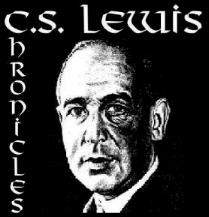
C.S. Lewis and the Kolbitar
Lewis' Membership in the Coalbiters founded by J.R.R. Tolkien
Then the brothers Gauka-Thorer and Afrafaste presented themselves to the king, and offered again to follow him. The king asked if they had now taken baptism. Gauka-Thorer replied that they had not. Then the king ordered them to accept baptism and the true faith, or otherwise to go away. They stepped aside to talk with each other on what resolution they should take. Afrafaste said, "To give my opinion, I will not turn back, but go into the battle, and take a part on the one side or the other; and I don't care much in which army I am." Gauka-Thorer replies, "If I go into battle I will give my help to the king, for he has most need of help. And if I must believe in a God, why not in the white Christ as well as in any other? Now it is my advice, therefore, that we let ourselves be baptized, since the king insists so much upon it, and then go into the battle with him." They all agreed to this, and went to the king, and said they would receive baptism. Then they were baptized by a priest, and the baptism was confirmed by the bishop.
The king then took them into the troop of his court-men, and said they should fight under his banner in the battle... We will have all our men distinguished by a mark, so as to be a field-token upon their helmets and shields, by painting the holy cross thereupon with white color. When we come into battle we shall all have one countersign and field-cry, `Forward, forward, Christian men! Cross men! King's men!' ...King Olaf was armed thus: He had a gold-mounted helmet on his head; and had in one hand a white shield, on which the holy cross was inlaid in gold. In his other hand he had a lance, which to the present day stands beside the altar in Christ Church. In his belt he had a sword, which was called Hneiter, which was remarkably sharp, and of which the handle was worked with gold. He had also a strong coat of ring-mail. from the Saga of (Saint) Olaf Haraldson |
The deep friendship between C.S. Lewis and J.R.R. Tolkien began when the latter invited his fellow Oxford don to a unique group he had established.Tolkien, a Professor of Anglo-Saxon, believed that, despite being overlooked, the Old Icelandic and Old Norse languages were important for medieval studies. Thus he founded Kolbitar, a society dedicated to the reading and study of Icelandic and Norse sagas. Lewis was drawn to the group as much for its subject matter, as for his love of language. In a 1927 diary entry, Lewis wrote, "spent the morning partly on the Edda... It is an exciting experience, when I remember my first passion for things Norse... at about the age of 9."
We owe a great debt of gratitude to Snorri Sturluson for authoring the most noteworthy Icelandic sagas during the beginning of the thirteenth century. His major works include the Prose Edda, which recounts the Norse mythological tales, and the Heimskringla, which is actually a collection of sagas about the Kings of Norway. The Poetic Edda, also called the Elder Edda, predated Sturluson's work by approximately a century. It includes more than thirty poems reciting the exploits of Scandinavian and Germanic gods and human heroes. Presumably it was primarily the Eddas, with their dynamic portrayals of Viking gods and goddesses, which most fascinated Lewis during the period when then Kolbitar flourished. While these Eddas do make wonderful reading, many readers will find the portions of the Heimskringla dealing with the introduction of Christianity to the North to be even more inspiring.
Tolkien named the association "Kolbitar," which referred to Coalbiters. This name hearkened to the telling of noble adventures and sagas around the roaring hearth. (Coalbiters are those who lounge so close to the fire in winter that they virtually bite the coal.) The image also emphasizes the intimacy shared by the group's members as they bundled themselves against the chill of world change and secularization, and regaled one another with the retelling of grand tales of history and myth.
The camaraderie of the Kolbitar was a foretaste of the even more satisfying joys Lewis and Tolkien would experience with their fellow Inklings.
Two Norse Sagas Such as the Kolbitar Enjoyed
Go to the Inklings Page
Return to C.S. Lewis Chronicles